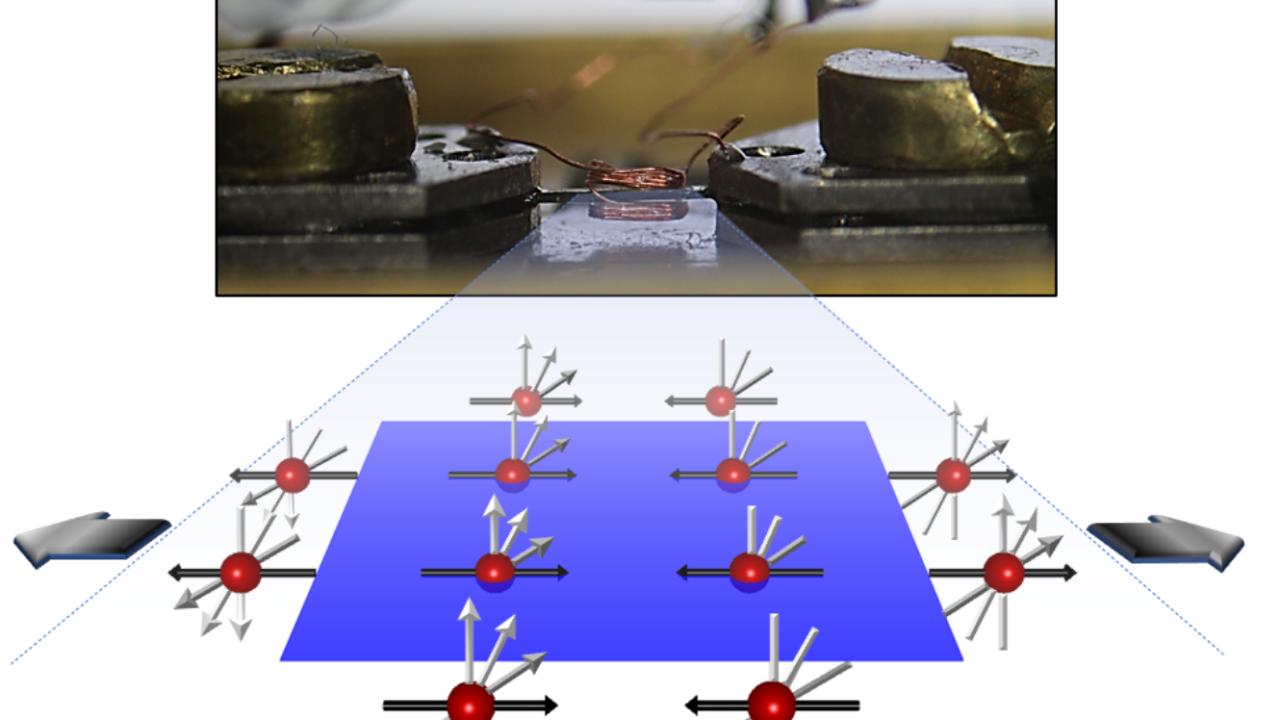
To uncover the quantum origins of superconductivity — the ability for some materials to conduct electricity without energy loss — scientists investigate the electronic characteristics of condensed matter materials through a variety of techniques, including nuclear magnetic resonance (NMR) spectroscopy.
In a study appearing in Review of Scientific Instruments, UC Davis researchers report a refined NMR method for investigating condensed matter materials, improving the sensitivity of the method by roughly 1,000 times.
“We’re trying to understand what drives materials to become superconductors,” said Nicholas Curro, a professor in the Department of Physics and Astronomy at UC Davis and co-author on the paper. “One of the things that people have uncovered is that there’s a certain class of superconductors that seem to be very sensitive to distortions, so if you stretch or compress it. We’ve distorted crystals in the past, but our pulsed technique is really novel.”
In the study, Curro, UC Davis graduate student Cameron Chaffey and Macalester College undergraduate student Caleb Williams, among others, exerted straining forces on BaFe2As2, a compound related to iron-based superconductors.
“This compound isn’t necessarily superconducting on its own,” said Chaffey, a fourth year Ph.D. student in the Department of Physics and Astronomy. “But with strain or with the introduction of other materials, we can see some interesting effects. It’s also very similar in structure to other superconductors.”
By perturbing such condensed matter, through either straining or stretching, scientists can learn more about the electronic characteristics of compounds of interest, thereby probing the origins of emergent phenomena like superconductivity.
Bombarding crystals
To test the quantum mechanical effects of strain on BaFe2As2, the researchers bombarded crystals of the compound with radio waves while also applying straining forces. The research involved fabricating a device capable of creating straining forces through electric pulsations.
“We weren’t necessarily sure this was going to work,” said Chaffey, who said a lot of work went into learning how to create pulses and learning how long to expose the material to them. “With the NMR, we’re really worried about the signal-to-noise ratio, so we’re always trying to increase the signal and reduce the noise. And that comes with trial and error.”
Through experimentation, the team confirmed that their refined NMR method detected how applied strain affected the BaFe2As2’s nematicity with much higher sensitivity than previously achieved. Nematicity refers to when a material’s structure breaks from its rotational symmetry. For this specific experiment, the pulsations affected BaFe2As2’s crystal lattice structure.
“There’s a certain direction in which strain really causes a change in the orbitals and we can measure that effect on the NMR response,” Chaffey said.
It’s this shift in structure that scientists believe leads to emergent phenomena, like superconductivity.
With the method proven and reported, the researchers hope others will use it to further investigate superconducting materials. For Williams, who joined Curro’s research group through the Department of Physics and Astronomy’s Research Experience for Undergraduates Program, the research was an opportunity to explore the connection between the theoretical and the experimental.
“Condensed matter physics is a unique scenario where you can learn a lot about theory, but it’s also a little easier to do the actual experiments,” said Williams, who was comparing the field to other areas like astrophysics.
“You can do things that you would never be able to do in outer space,” added Chaffey. “We know that things are happening in crystals and in materials, but when you rearrange those particles, unbelievable things do happen, like superconductivity.”
